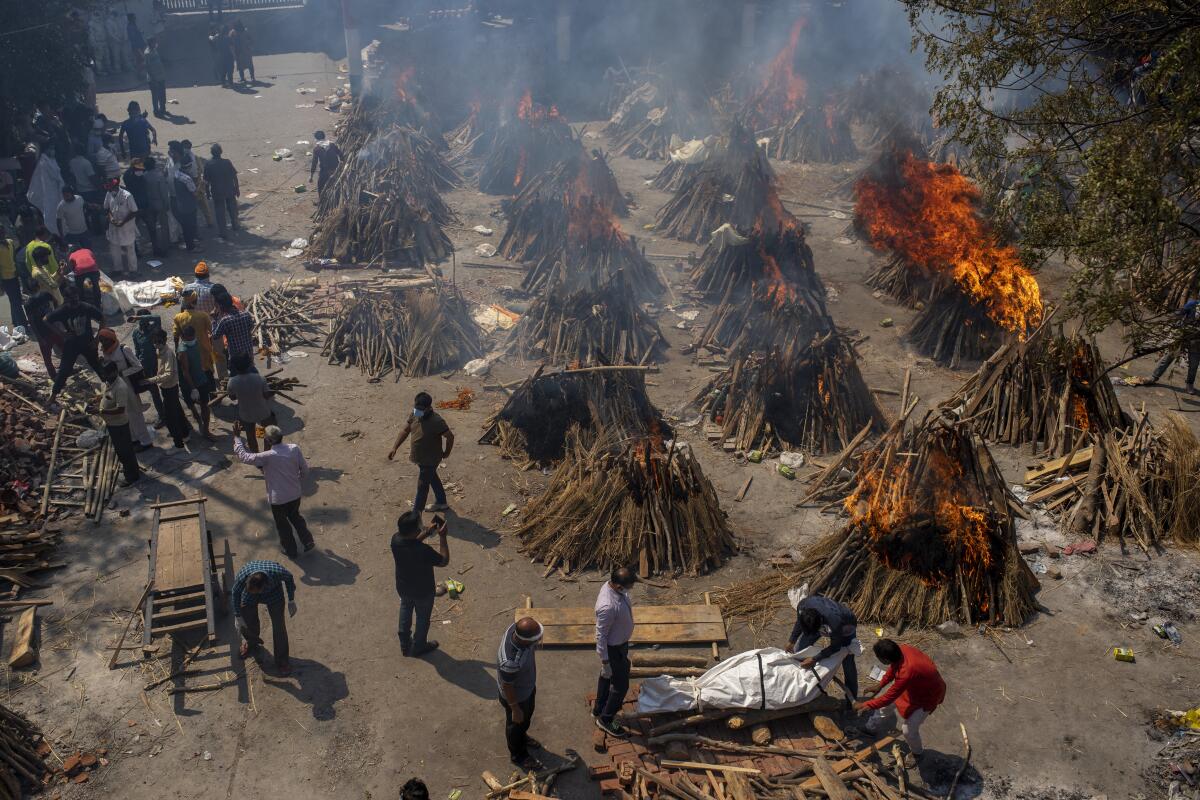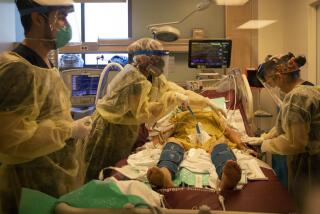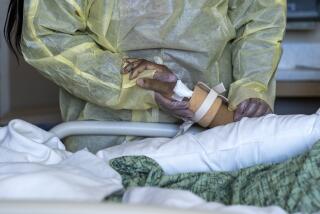Living and dying with COVID in India’s caste system

- Share via
A hospital in Patna, India, was ready to eject a COVID-19 patient to admit my uncle, whose oxygen level had dipped. But through our family connections with local politicians and senior bureaucrats, we got a bed for my uncle at another hospital. Once he was admitted, half a dozen doctors started to stabilize him.
As one uncle struggled to stay alive, another uncle passed away in Mumbai from COVID complications. My cousin, a high-ranking bureaucrat, took off for Mumbai, handled the cremation, overcoming the bureaucratic hurdles due to COVID restrictions, before he hopped on the last flight out of Mumbai.
You get the point, right? My family members are on the privileged side of the Indian system, at the intersection of power and position, class and caste.
Last year’s stringent lockdown across India largely protected — by the government’s design — people with connections, nouveau nationalists, Muslim-bashers, well-off high-caste Hindus.
“Pray that Americans, Brits, Italians learn pandemic management from us,” an aunt sneered over Zoom. Her newfound patriotism comes with dollops of jingoistic bluster.
In service of a muscular India, Muslims who congregated at a Delhi mosque early in the pandemic were called scumbags. And poor migrant laborers, returning on foot from Delhi and Mumbai to cities like Patna, were called scourges.
“Uff. Can’t believe these people,” another aunt scoffed as starved laborers descended on our town.
India’s poor propped up my extended family in the upper-middle classes. Their poverty is how we got them as drivers, cooks and dishwashers. During the pandemic, we could stay inside because we had them to run errands for us — and contract the virus on our behalf.
They are seen as disposable. One sneeze and they could be banished to government-run hospitals, where two patients often share one bed or would lie in hospital corridors without care at all. And if they died, their bodies could be tossed into rivers.
But hell would break loose if the flood of migrant laborers spread the virus among the upper-middle classes. Not only would the privileged out-bribe one another for the few doctors and nurses and even fewer hospital beds in our town, but also would hoard lifesaving drugs, all in anticipation of the disease.
By an odd mix of circumstances — whether grandma remedies, strict lockdown or sheer luck — most of my relatives escaped COVID last year.
But in April, my uncle in Patna got sick with the virus, right after he got his first vaccine shot. After three days in the hospital, he died.
Suddenly my family was in the mix, part of the headcount in the second COVID wave, part of the countless families grieving for relatives who died gasping for oxygen in hospital corridors and parking lots.
Immediately after his death, my family members jumped the line at Patna’s Bhasghat crematorium and got his body in front of the long queue awaiting their final journeys. The pandit, under orders to not rush, chanted the Vedic mantras. The cremator putting logs on his pyre didn’t ration the wood, which he most certainly would have to for the long line of cremations to follow.
On the 13th day after my uncle’s death, we grieved over Zoom. His soul, we believe, would journey across to join those of his forefathers that day. But 17 of us stared blankly into our phones, without expression, without tears, with an overwhelming fear for those still alive.
What if another relative took ill?
Two aunts and their entire families have COVID. My 69-year-old mother is running a low temperature. My 80-year-old father is recovering from a non-COVID sickness, still dizzy and weak. Two domestic helpers who got COVID have been sent away from the household. I am trying to return to Patna from the United States, but pandemic restrictions have made it hard.
COVID is rampaging through the top civil servants, bureaucrats, politicians in Patna. While the elites are scrambling for hospital beds and oxygen cylinders, everyone below them in the social order has been left to die.
As the elite dead get cremated first, upper-middle-class families wait in mile-long lines, for over 24 hours, cremating relatives on rationed woods, with two or sometimes three others on the pyre. And even that’s a privilege.
Tides of death are burying our town. It will only get worse. It always does. And we wonder: How many of us will make it to the other side of the pandemic? Where will our dead loved ones end up — at cremation grounds or in the Ganges, tossed into the river or buried in a sand pit?
Mona Mohan is a writer and information technology professional based in Houston. @monamohan
More to Read
A cure for the common opinion
Get thought-provoking perspectives with our weekly newsletter.
You may occasionally receive promotional content from the Los Angeles Times.









